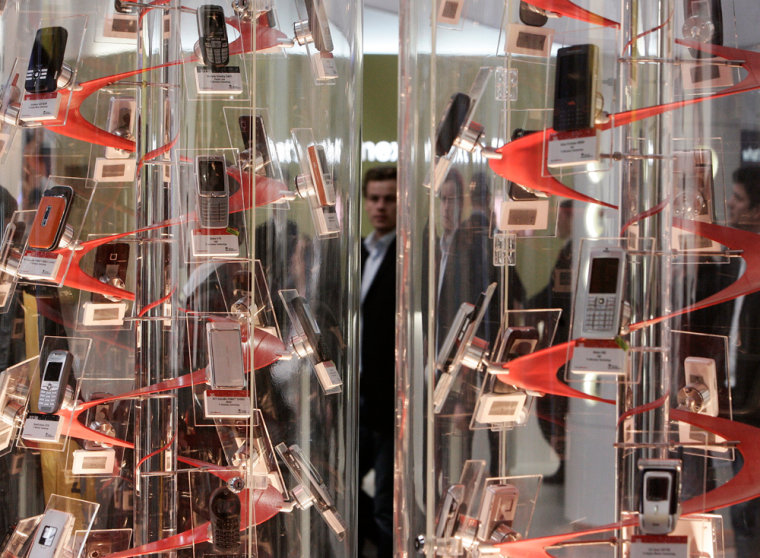Mobile television is taking center stage at Europe's annual wireless industry show after years of largely unfulfilled hype, though differing technology standards still blur the picture.
As in past years, mobile network operators, handset makers and content providers are banding together at 3GSM to pitch TV broadcasts, video games and other entertainment as the answer to stagnant or shrinking revenue from phone calls, compounded by slowing subscriber growth in Europe.
But this time around, mobile TV broadcasts are actually available to cell phone users in a growing number of countries, from Europe to Asia. Soon they're expected to arrive in the United States, though once again a technological divide appears to be forming over the Atlantic Ocean.
While more mobile TV services and devices have been rolled out over past year, "none of them have really taken the market by storm," said Nick Lane, an analyst at the research firm Informa Telecoms & Media. For that to happen, questions about the viability of the different platforms, software and business models, need to be addressed, he said.
At the show that opened Monday, industry players were confident that the pieces are coming together.
Nokia Corp. Chief Executive Olli-Pekka Kallasvuo used his keynote to unveil the N77, a multimedia device with a 2.4-inch screen he said would speed up the acceptance and use of mobile TV services based on DVB-H, or digital video broadcast-handheld. That platform has been embraced by a growing number of wireless operators that already use the globally dominant GSM technology standard for their phone networks.
Kallasvuo predicted the DVB-H market would reach as many as 10 million units sold by the end of 2008 and double to 20 million in 2009.
The N77's features include stereo sound, alerts that sound when a show starts, and a program guide that shows listings for up to a week.
"With the Nokia N77, we are expecting an increase in the take-up of broadcast mobile TV service in Vietnam," said Le Doan Quan, director of VTCmobile Television Co.
VTC rolled out a DVB-H service in 2006, making Vietnam the first country in Asia Pacific to roll out broadcast mobile TV services based on that standard.
But while DVB-H has the early lead, there are other standards making inroads, including one from Qualcomm Inc. — a frequent nemesis to the GSM-based European wireless industry that nonetheless notched a major new customer from the GSM camp on Monday.
Qualcomm, embroiled in numerous technology licensing disputes with Nokia and others, announced that AT&T Inc.'s Cingular Wireless, the biggest mobile carrier in the United States. Qualcomm had already signed on Verizon Wireless to launch its broadcast TV service starting next month. With AT&T on board, Qualcomm has now locked up the two biggest U.S. players with a combined customer base of roughly 120 million.
While next-generation services are a focal point of the show, the industry is still looking to generate subscriber growth from markets where cell phone usage isn't reaching saturation.
"The big story for the industry in 2007 is the continued growth of the global mobile population," said Mark Newman, CEO of Informa, which is forecasting an additional 480 million new subscribers this year, with four out five of them coming form emerging markets in Asia, Africa, the Middle East and Latin America.
"The mobile phone is driving social and economic development throughout the developing world," he said, adding that "market growth is creating economies of scale which, in turn, is bringing mobile communications within reach of new, lower-income market segments."
While that bodes well for operators, it's mobile TV and wireless Internet access that will augment stagnating voice business in more mature markets.
